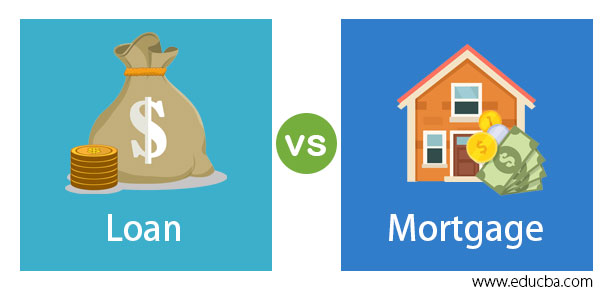Professional Tips for Protecting Conventional Mortgage Loans with Competitive Prices
Wiki Article
The Important Elements to Think About When Deciding On In Between Fixed-Rate and Adjustable-Rate Home Loan Finances
When assessing mortgage alternatives, debtors encounter a critical choice in between adjustable-rate and fixed-rate loans, each offering possible pitfalls and distinct benefits. Secret considerations such as passion price security, predictability in month-to-month settlements, and the ramifications of potential price modifications can dramatically affect long-term economic health and wellness.Rate Of Interest Security
When choosing a mortgage, recognizing interest rate stability is critical for notified decision-making. Interest prices can substantially impact the total price of a home loan, and acknowledging the nature of these rates is vital for debtors.On the other hand, adjustable-rate mortgages (ARMs) begin with lower preliminary prices that may transform periodically based on market conditions. While this can cause reduced payments at first, it likewise introduces unpredictability, as consumers might encounter increased payments if rate of interest increase. For those thinking about an ARM, it is crucial to assess the likelihood of rate changes, the potential for settlement rises, and the size of the first fixed-rate duration.
Eventually, the choice between fixed-rate and adjustable-rate home loans depends upon individual threat resistance and economic conditions. Recognizing passion rate stability aids debtors make notified decisions that line up with their lasting monetary goals.
Month-to-month Repayment Predictability
While consumers often prioritize rate of interest price stability, the predictability of month-to-month settlements is equally important in the home mortgage choice process (Conventional mortgage loans). Monthly settlement predictability plays a crucial duty in budgeting and financial planning, as it straight affects a home owner's capital and general financial wellnessFixed-rate home loans offer a regular month-to-month payment throughout the life of the car loan, permitting customers to expect and prepare their expenditures successfully. This security can be especially beneficial for first-time property buyers or those on a fixed earnings, as it removes the uncertainty connected with fluctuating settlements.
Conversely, adjustable-rate home mortgages (ARMs) normally feature lower first payments that can transform in time, bring about potential variability in month-to-month responsibilities. While originally appealing, this unpredictability can complicate financial preparation, especially if customers do not make up future price adjustments.
Potential Rate Adjustments
In the world of adjustable-rate mortgages (ARMs), potential price changes represent a substantial variable that borrowers have to thoroughly take into consideration. Unlike fixed-rate home mortgages, where the passion price continues to be unchanged for the life of the funding, ARMs are defined by rising and fall rates of interest that are linked to market indices. This irregularity can lead to substantial adjustments in regular monthly settlements, influencing the customer's financial planning and budgeting.Normally, ARMs have a preliminary fixed-rate duration throughout which the rates of interest is steady. After this period, nevertheless, the price readjusts at fixed periods-- typically annually. Customers must recognize the margin and index used to determine these modifications, as they directly affect future passion rates. In addition, ARMs often consist of caps that restrict how a lot the rates of interest can enhance at each change and over the life of the lending, which can provide some degree of security versus drastic rate walks.
Comprehending these potential adjustments is vital for debtors, as they straight affect long-lasting settlement commitments. For that reason, analyzing personal economic situations and risk tolerance is crucial when deciding whether an ARM straightens with one's monetary objectives.
Lending Term Considerations
Finance term considerations play a critical function in the decision-making procedure for consumers selecting in between fixed-rate and adjustable-rate home loans. The size of the car loan term dramatically impacts month-to-month payments, interest rates, and general monetary preparation. Fixed-rate mortgages generally provide terms of 15 to 30 years, supplying security in month-to-month settlements and predictability in budgeting. This can be specifically appealing for consumers that plan to remain in the same home long-term and prefer the assurance of set settlements throughout the life of the finance.
Inevitably, customers should evaluate their personal conditions, economic objectives, and market conditions when weighing the ramifications of finance term selections within each home mortgage type.

Overall Price of Loaning
Fixed-rate useful site home loans use foreseeable regular monthly settlements, as the passion rate remains continuous throughout the car loan term. This predictability can lead to lower general prices, specifically in a stable or declining rate of interest price setting.Alternatively, adjustable-rate mortgages (ARMs) usually begin with lower initial rates, leading to minimized in advance prices. These prices can raise after an initial period, leading to possibly higher long-term prices. Borrowers have to consider the frequency and level of rate adjustments, along with the overall finance period, to precisely evaluate the financial implications.
Moreover, the total price of loaning includes not only rate of interest rates but likewise fees and other linked expenses, such as shutting costs and insurance (Conventional mortgage loans). Consequently, when reviewing home loan choices, customers need to conduct a comprehensive cost analysis over the life of the lending. By doing so, they can make an enlightened decision that straightens with their monetary objectives and run the risk of resistance
Verdict
Interest rate security and monthly repayment predictability are critical for reliable budgeting, while the potential for price changes in ARMs presents financial uncertainty. Furthermore, the anticipated period of homeownership and the overall cost of loaning, including interest rates and connected see it here fees, must straighten with private economic circumstances and risk resistance.Trick factors to consider such as passion rate stability, predictability in regular monthly repayments, and the effects of possible rate changes can considerably impact long-lasting economic wellness. Passion prices can substantially affect the overall price of a home loan, and acknowledging the nature of these rates is necessary for debtors. Unlike fixed-rate home mortgages, where the passion price stays the same for the life of the finance, ARMs are defined by rising and fall passion rates that are tied to market indices. Additionally, ARMs often consist of caps that limit exactly how much the passion rate can enhance at each modification and over the look at this website life of the financing, which can supply some degree of protection against drastic rate walks.
Rate of interest price security and regular monthly payment predictability are paramount for reliable budgeting, while the capacity for rate changes in ARMs presents financial unpredictability.
Report this wiki page